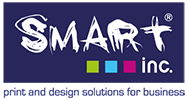How Does Digital Signage Work?
What is Digital Signage?
Digital signage is a dynamic way of displaying multimedia content on electronic displays and it’s commonly used in advertising, information and education, and for entertainment purposes. Digital signage has become a popular choice for businesses as it has many benefits and provides a more modern look and feel compared to traditional posters.
Digital signage components often include displays, media players, and mounting hardware. Displays can be LCD panels, LED video walls, or projectors. Media players are the devices that power digital signage, manage scheduling, and feed content to the signage screen and the mounting hardware is used to install displays in a variety of settings.
How do Businesses Use Digital Signage?
As the name suggests, there is a ‘digital’ aspect to this that you can’t get with traditional signage. Digital signage can utilise software for various benefits, including content creation and management tools, scheduling software, and analytics software.
Content creation tools allow users to create multimedia content such as images, videos, and animations. Scheduling software enables users to schedule content to be displayed at specific times and analytics software provides data on how the digital signage is performing, including how many people are viewing the content.
Content Management and Distribution
Content management and distribution involve creating, scheduling, and delivering content to the digital signage displays. This content can be created in-house or outsourced to a third-party provider, and scheduling software is used to determine when and where content will be displayed. Content can be distributed to displays via the internet, a local network, or a physical storage device. What content you display, and how you display it is often determined by where the signage will be placed and who you are targeting.
Digital signage has become a very powerful tool for businesses and organisations to communicate with their audiences.
How to Use Digital Signage for your Business
Installation and Set-up of your Signs
When it comes to installing and setting up digital signage, you need to make sure that you have the right hardware and software. The hardware components include the display screens, media players, and any other necessary accessories. The software includes the digital signage software, scheduling software, and content management software. Which types of software you need is dependant on what you want to use the digital signage for; but generally these three are adequate.
You should also consider the location of the digital signage. It should be placed in an area that is visible to your target audience and where it can be easily accessed. For safety reasons it’s also vital that the digital signage is installed securely and that all necessary cables and connections are in place.
Network Connectivity
Digital signage often requires a network connection to function properly. This can be achieved through a wired or wireless connection, depending on your needs and the location of your signs.
Tip: Make sure that the network connection is stable and that the digital signage is able to receive and display content without any interruptions. Although this is a great advertising tool, like everything else, if it fails to engage your audience then it’s not going to provide your business with a return!
Maintenance and Troubleshooting
Regular maintenance is essential to ensure that your digital signage is functioning properly.
This includes cleaning the display screens, checking the cables and connections, and updating the software as necessary.
If you encounter any problems with your digital signage, you should first check the connections and settings to ensure that everything is properly configured. As digital signage requires both a network connection and power, there is more that can go wrong compared to traditional signage. This means that you or your business may not have the internal teams available to troubleshoot and fix any technical issues. This is why working with an established digital signage provider can keep any downtime to a minimum.
Benefits of Using Digital Signage
Increase Engagement with your Target Audience
One of the main benefits of digital signage is that it can help to increase engagement with your target audience. By displaying dynamic and eye-catching content, you can capture the attention of passersby and encourage them to interact with your brand. Finding areas in which your audience visit frequently, and placing your signage front and centre, is a great way to have your brand noticed.
It’s Cost-effective
Digital signage can also be a cost-effective advertising solution, particularly when compared to traditional advertising methods like billboards or print advertisements. Once you have invested in the hardware and software needed to set up your digital signage, you can easily update your content as needed without incurring additional costs.
Improved Targeting Compared to Other Advertising Options
Digital signage also allows for improved targeting of your advertising messages. By tailoring your content to specific audiences or locations, you can increase the effectiveness of your advertising campaigns and ensure that your messages are reaching the right people at the right time.
Generate Revenue for Your Business
Finally, digital signage can also help to increase revenue for your business. By promoting your products and services in an engaging and dynamic way, you can encourage more customers to make purchases and boost your bottom line.
Provide Up-to-date Information Instantly
Do you prices change often? Do you have different messages & promotions to show your customers? If so, digital signage allows you to update your messaging far quicker than traditional print – and in the long-term it’s far cheaper. If you have multiple locations or multiple signage areas then updating your digital content is a lot quicker than having a team switch our your physical print materials.
Which Businesses Use Digital Signage?
Retail Shops
Retail shops can use digital signage to promote their products, highlight special offers, and provide customers with helpful information such as maps and product reviews. Digital signage can also be used to create an immersive shopping experience by displaying high-quality images and videos. You will often find digital signage used for promotions or wayfinding within large shopping centres.
Restaurants and Cafes
Restaurants and cafes can use digital signage to display their menus, showcase daily specials, and promote new dishes. Many takeaway or fast-food businesses will use digital signage above the counter in place of large printed menus as this allows them to update prices, menu items and promotions without having to physically replace printed materials nationwide.
Corporate Offices
Corporate offices can use digital signage to communicate important information to employees, such as company news, upcoming events, and safety messages. Digital signage can also be used to display real-time data such as sales figures and customer feedback. Shared office spaces will often use digital signage as a wayfinding tool to allow guests and hybrid workers to navigate the building easily.
Healthcare Facilities
Healthcare facilities can use digital signage to provide patients with important information such as wait times, appointment reminders, and health tips. Digital signage can also be used to create a calming and welcoming environment by displaying soothing images and videos.
Transportation Hubs
Transportation hubs such as airports and train stations can use digital signage to provide passengers with up-to-date information about arrivals and departures, as well as information about local attractions and amenities. Digital signage can also be used to display entertaining content such as news and weather updates.
For help with your digital signage or to find out more about the Smart Inc services speak to our team today on 01992 410960 or info@smart-inc.co.uk.
Categories
- Uncategorised (13)
Recent Posts
Recent Comments
Archives
Categories
Categories
- Uncategorised (13)



